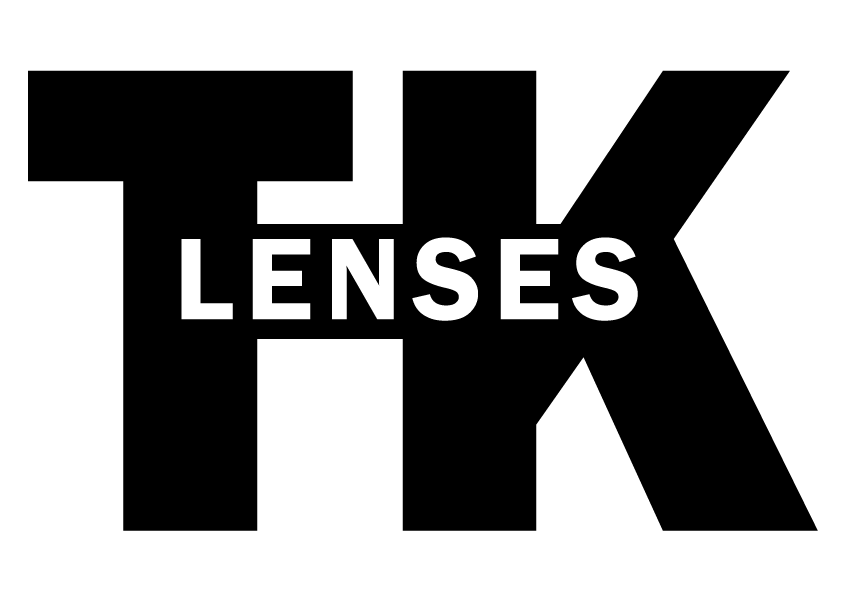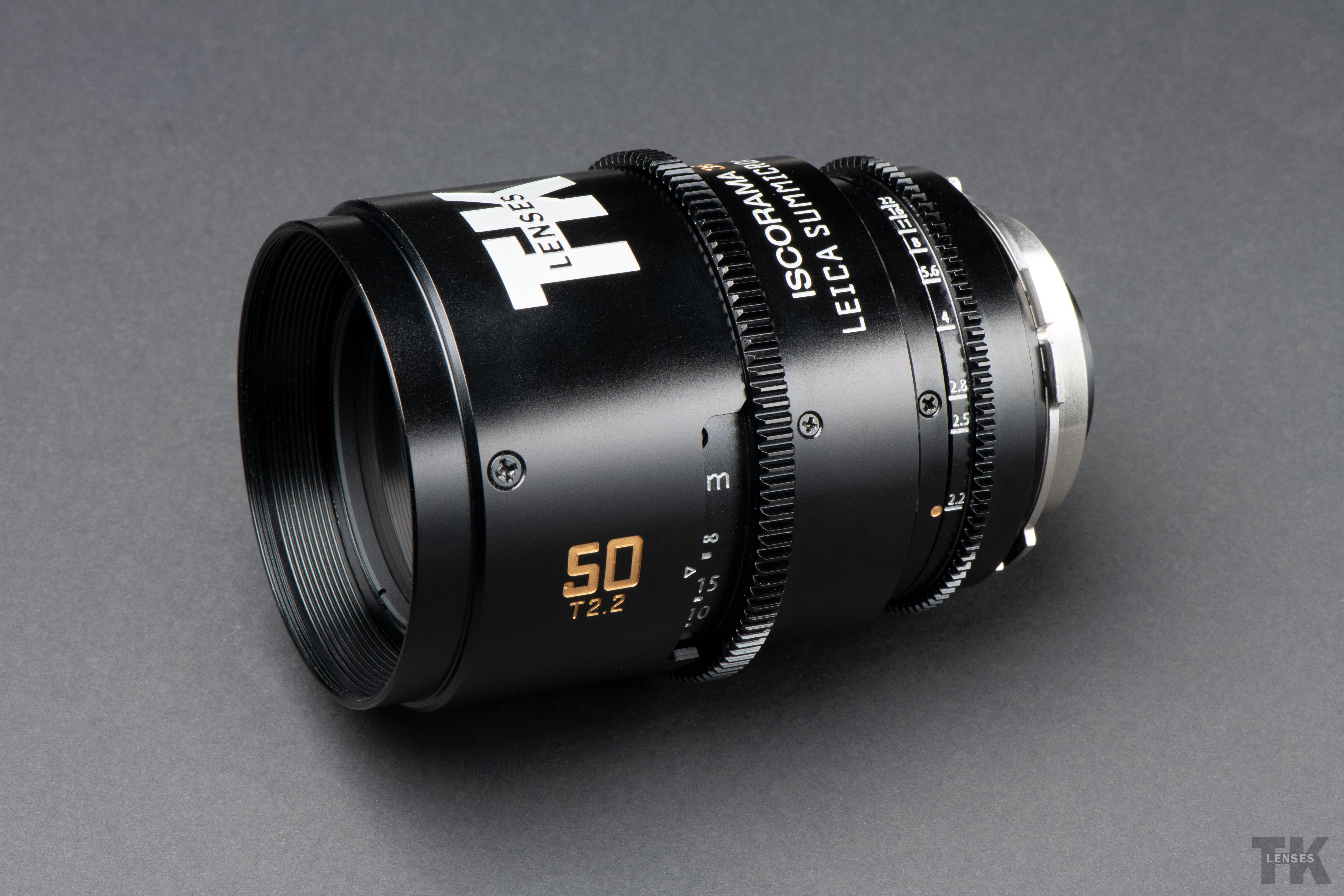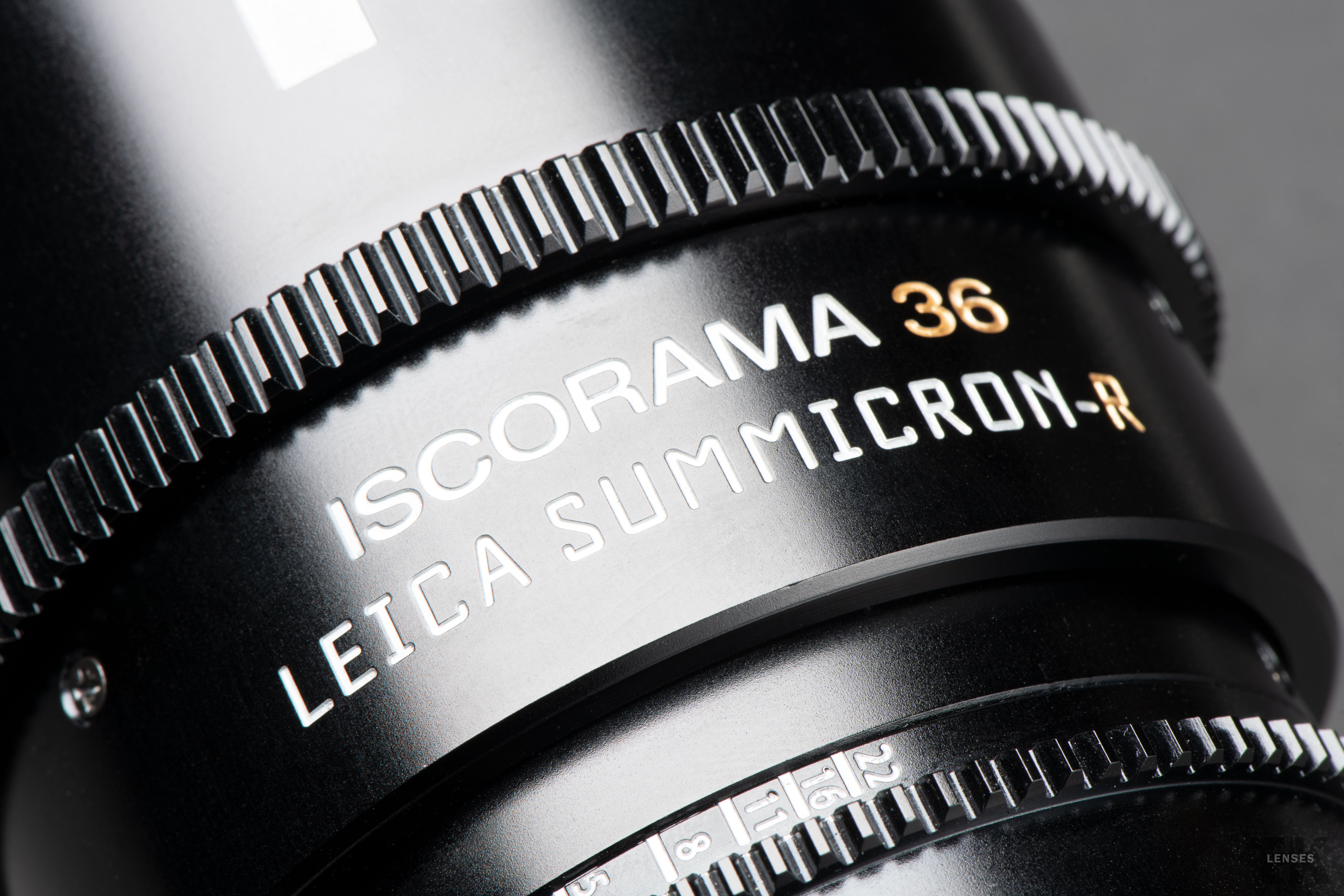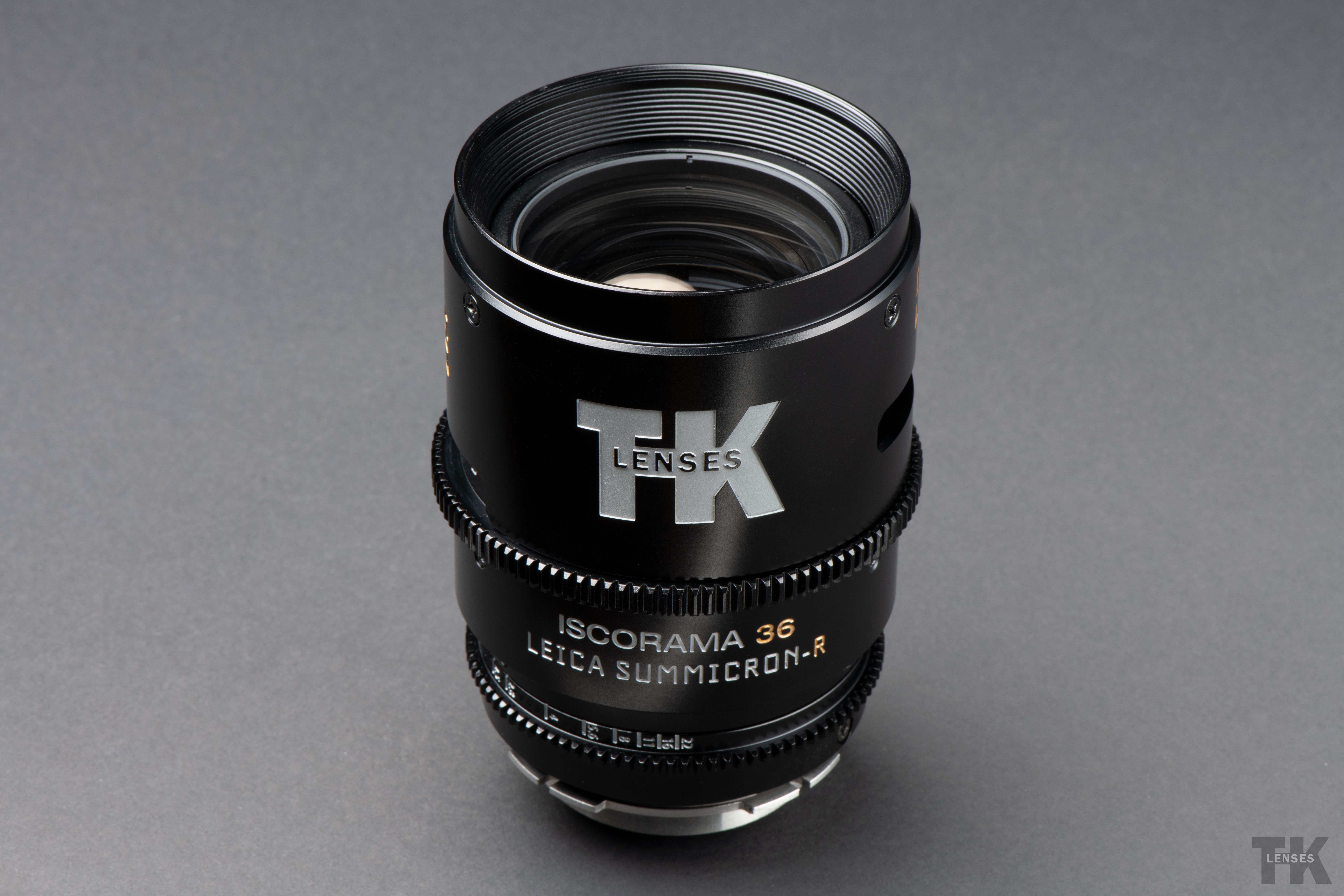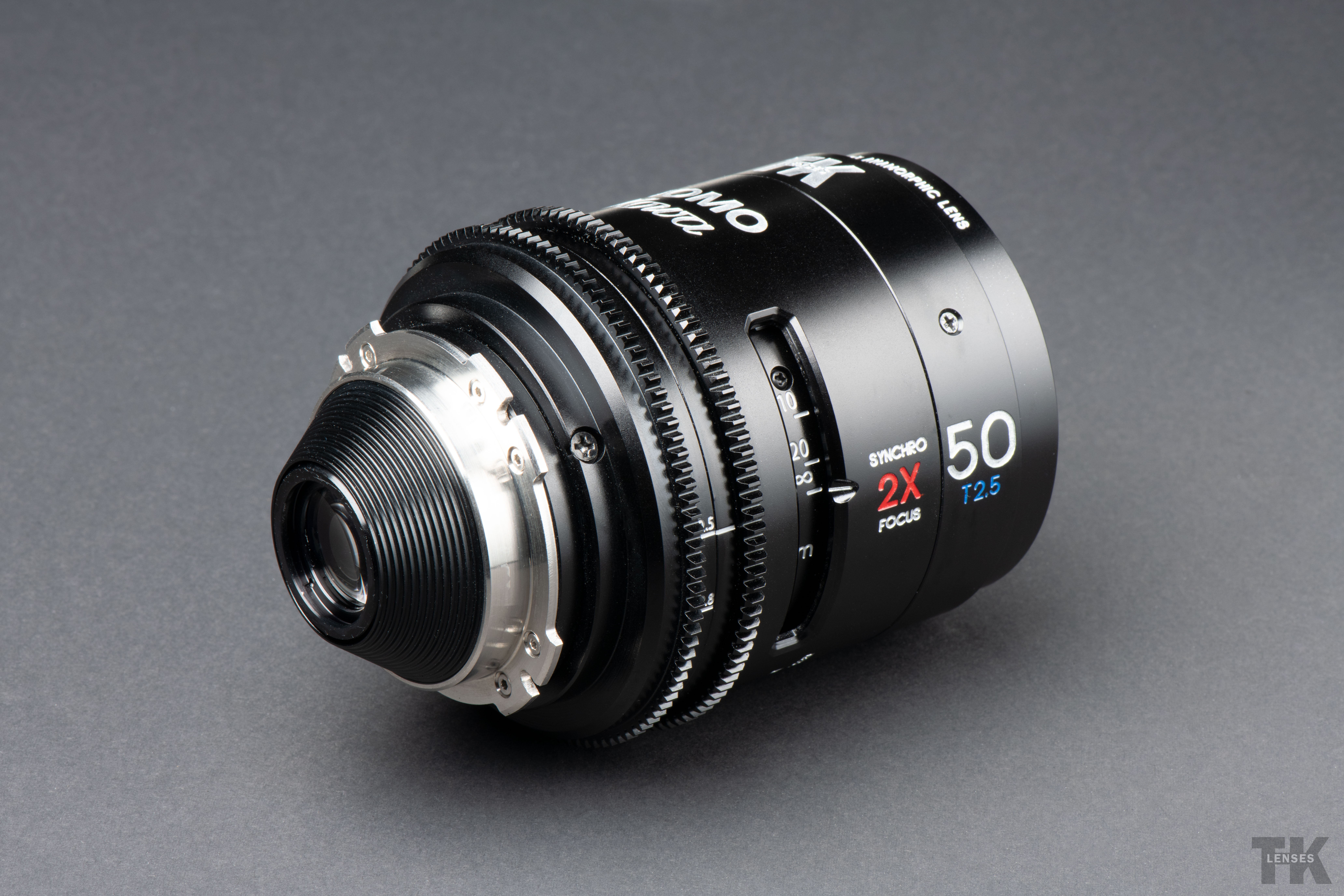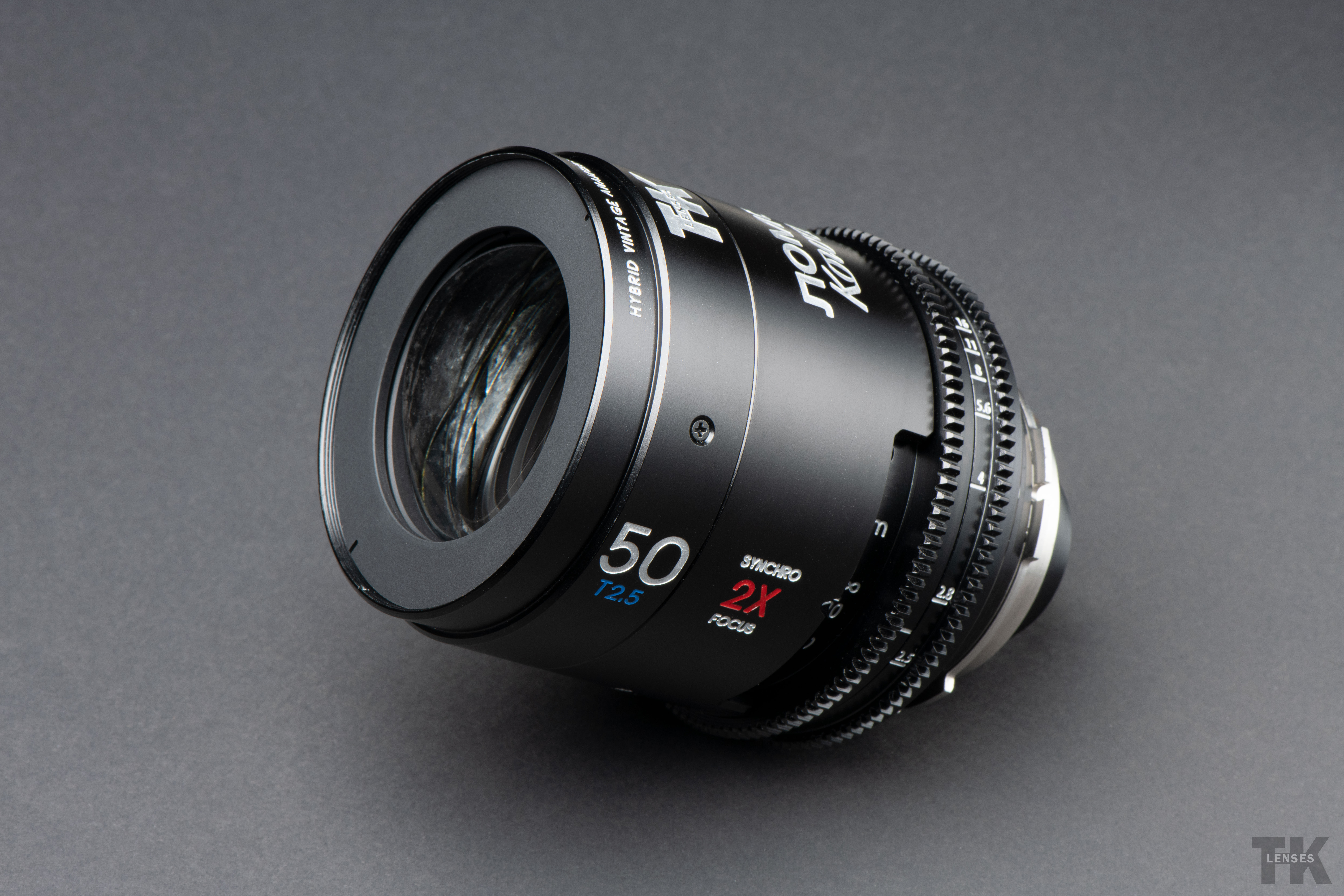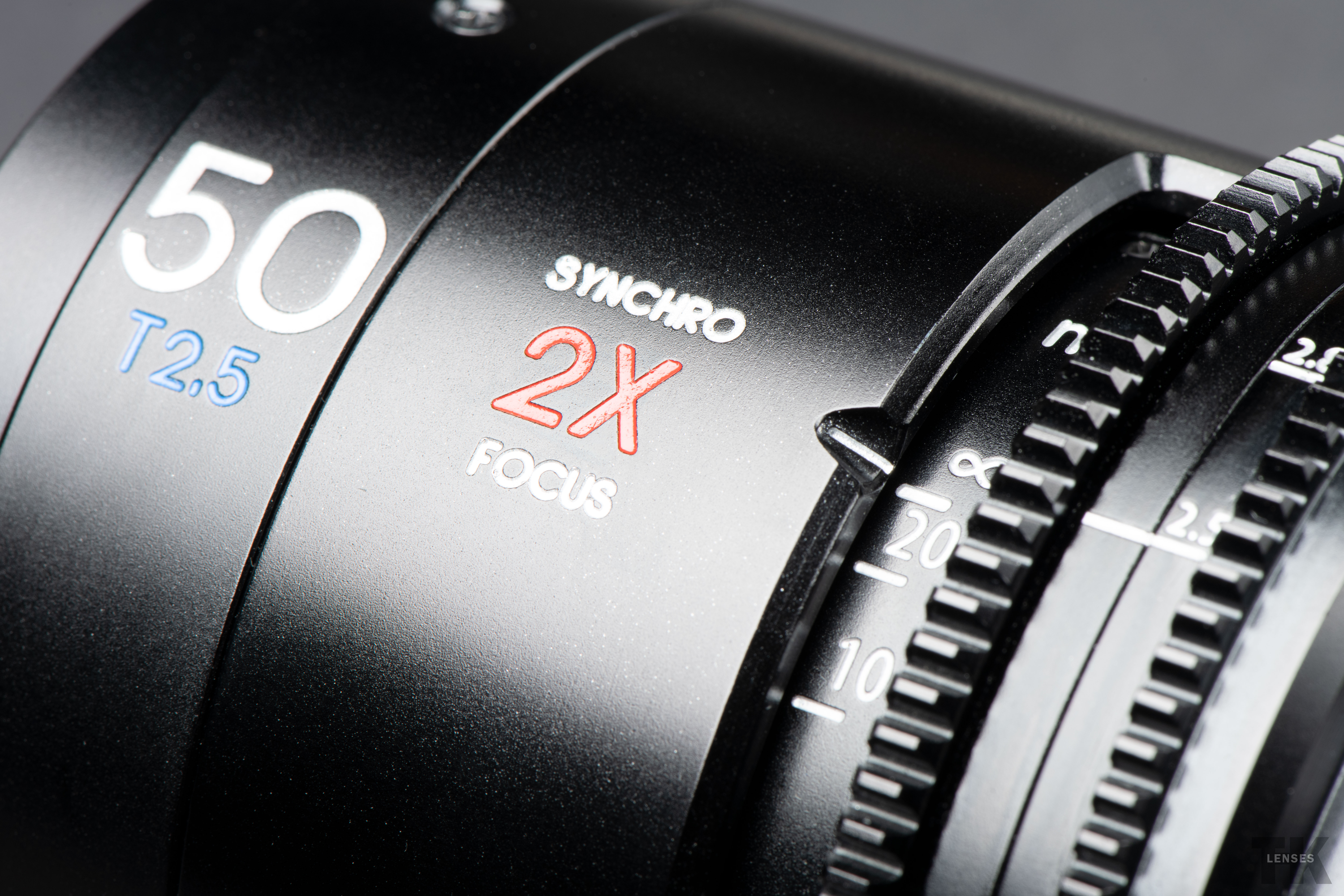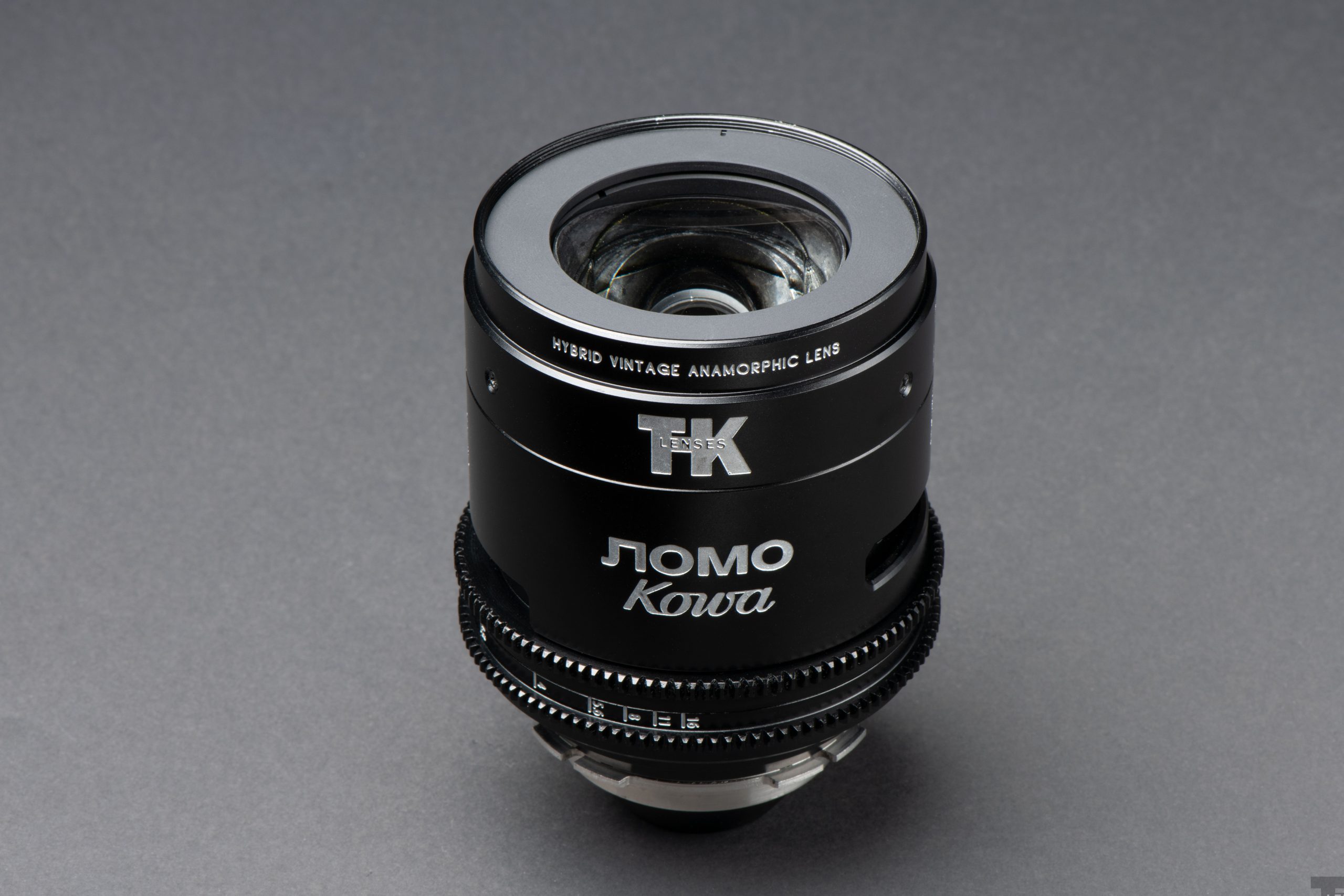Anamorphic Lenses Rehousing
In addition to our Anamorphic Adapter rehousing services, we also offer rehousing services for monobloc anamorphic lenses. These lenses combine the taking lens and anamorphic element, and may also include an optional focuser, all in a single lens.
There are two primary focusing methods that we can incorporate into the rehousing of your anamorphic lens:
1. Synchro-Focus
We offer the service of rehousing your Lomo Squarefront or constructing a new synchro-focus anamorphic lens utilizing a Lomo spherical lens and a Kowa 16-H or Sankor 5e anamorphic adapter. The rehoused lens with this method can be quite compact, however, it may exhibit “mumps” (a distortion where a face appears fatter at the minimum focus) due to the reduction in squeezing ratio at closer focus distances.
The main focus of our service on this focusing method is the Lomo x Kowa Synchro-Focus Anamorphic lens set, which includes four focal lengths: 40mm, 50mm, 75mm, and 100mm. These lenses are compact and operate similarly to the Kowa Cine Prominar Anamorphic lenses. However, one main difference is that the Kowa 16-H (and its variants such as Kowa 8-Z, Kowa B&H, and Elmoscope II) has only two groups of elements, while the Cine Prominar Anamorphic lens has three groups of elements. This results in a different flare characteristic and lens coating. Additionally, both lens sets feature mumps due to the nature of the synchro-focus mechanism.
2. Front Vari-Diopter
The use of a front variable diopter is a widely popular method for focusing both DIY and professional anamorphic lenses. This technique involves fixing the taking lens and anamorphic lens at infinity, while utilizing the front variable diopter as a focuser. This method eliminates the issue of mumps, as the anamorphic lens remains fixed at infinity, thus ensuring a consistent squeezing ratio. However, the downside is that the front variable diopter must be of a sufficient size to avoid vignetting, resulting in a larger and heavier lens.
Our flagship rehousing design for the front vari-diopter method is the Tri-Section Interchangeable Anamorphic Lens System (TSAS). It consists of three individual, swappable sections. Each section features a bayonet lock, similar to a PL mount, that securely attaches to the other sections. This rehousing design allows for a wide range of combination possibilities. For instance, you can start with a Leica Summicron-R 50mm, Kowa 16-H, and FVD-24A and then add a Lomo 50mm as a taking lens or a Sankor 5e as a scope.
TSAS with a configuration of LOMO OKC1-50-6, Kowa 16-H, and FVD-24A.
Iscorama × Leica R Monobloc Anamorphic Lens
This is a series of a front vari-diopter anamorphic lens set built with Leica Summicron-R and the legendary Iscorama 36 (and Cinegon) in a solid, monoblock lens housing.
- Weights ~1,200g with caps
- 270-degree focus throw.
- 12-blade iris replacement for the Leica R 50mm.
- Completely internal focusing. No telescoping or rotating during the focus.
- 80mm front OD.
- ~0.9m close focus.
- A bit of vignetting on a full-frame sensor 16:9 but mostly cleared after cropping to 2.35:1.
Information for the pricing can be found on this page.
LOMO ⨉ KOWA SYNCHRO FOCUS ANAMORPHIC
It features a synchronized focus mechanism where both the taking lens and anamorphic lens focus at the same distance simultaneously. This mechanism is also found in the original Kowa Cine Prominar Anamorphic, along with many other scopes from the same era such as the Lomo Squarefront, Dyaliscope, and Nipponscope Series I.
- PL mount
- 80mm OD
- Lens support
- 1166g without caps
- 270-degree focus throw
- Close focus to 1m
- A complete internal focusing mechanism, no front telescoping or rotating
- Cam-type mechanism
Information for the pricing can be found on this page.
